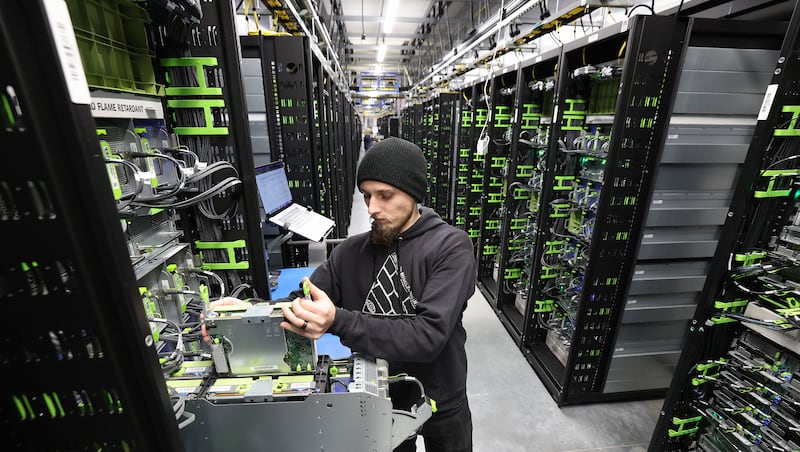The Growing Demand for Energy and Water from Data Centers in the Western U.S.
A recent report by Western Resource Advocates highlights the urgent need to address the growing energy and water demands of data centers, particularly in the arid regions of the western United States. As artificial intelligence and other advanced technologies continue to expand, there is a surge in the construction of data centers, which requires a massive expansion of the energy grid. This rapid growth poses significant challenges for both energy and water resources in the region.
Deborah Kapiloff, a policy adviser at the advocacy group, emphasized that without proactive regulation, residential customers could face higher energy bills, and progress made in reducing pollution from fossil fuels could be jeopardized. The report underscores the substantial energy required not only for computing but also for cooling the hardware housed within these facilities.
According to the report, if the projections of data center load growth from regional utilities come to fruition, new facilities in Arizona, Colorado, Nevada, New Mexico, and Utah could consume up to 21,600 acre-feet (7 billion gallons) of water annually by 2035. This volume of water would meet the annual needs of approximately 194,000 people. The report, titled “Data Center Impacts in the West: Policy Solutions for Water and Energy Use,” presents a comprehensive overview of electricity load forecasts for data centers in the region, along with potential water impacts.
The organization advocates for robust regulatory policies that can protect customers, conserve water resources, and encourage investment in clean and innovative technologies. Key recommendations focus on three main areas: advancing clean energy, preserving scarce water resources, and protecting electricity customers.
Some of the proposed policy solutions include enhancing water efficiency, implementing data reporting mechanisms, and shifting energy use to off-peak hours when possible. Additionally, economic development incentives should only be granted if it is demonstrated that the energy demand will not negatively impact existing customers.
Strain on the Energy Grid
The report warns that the increasing demand on the energy grid is already causing strain and could lead to higher power bills. The collective annual energy demands of utilities in the Western Resource Advocates’ region are projected to rise by 32% in 2030 and 55% in 2035. Over the 2025-2035 period, this represents an annual growth rate of 4.5%. This forecast is significantly higher than what utilities had anticipated just a few years ago, and the unprecedented growth is straining the reliability and affordability of the energy system.
A Potential Solution in Utah
During the last legislative session, Senator Scott Sandall of Utah proposed a measure aimed at shielding current ratepayers from the explosive growth in energy demand caused by data centers. The bill, SB132, allows developers of these centers to operate in a competitive space rather than under a regulated monopoly system. This approach aims to provide more flexibility for meeting the high energy demands of data centers while protecting existing customers from increased costs.
Sandall highlighted several key points during his legislative testimony. He explained that the bill applies specifically to the geographic area served by Rocky Mountain Power and allows the utility to compete in individual contracts. It also creates a pathway for outside entities to serve as providers for these large loads. One of the main concerns addressed by the bill is ensuring that the costs associated with expanding energy infrastructure do not get passed on to regular customers.
SB132 was signed into law in late March by Utah Governor Spencer Cox, marking a significant step in addressing the challenges posed by the rapid expansion of data centers.
Looking Ahead
Kapiloff emphasized that decision-makers must respond to the immediate challenge of meeting the growing energy and water demands of data centers while also building policies that support long-term progress toward energy, water, and climate goals. With smart policy solutions, there are opportunities to power data centers using renewable resources and sustainable water practices. Now is the time to implement these strategies effectively.







